Welcome to Albania, Europe’s last unturned stone.
Albania is one of the most fascinating countries even by Balkan standards.
A land of rich culture, mesmerizing nature, excellent cuisine and proud and passionate people.
With its combination of amazing coastline, high mountains, picturesque and authentic villages, bad roads and hospital people, Albania is a paradise for real adventurers and adrenaline lovers.
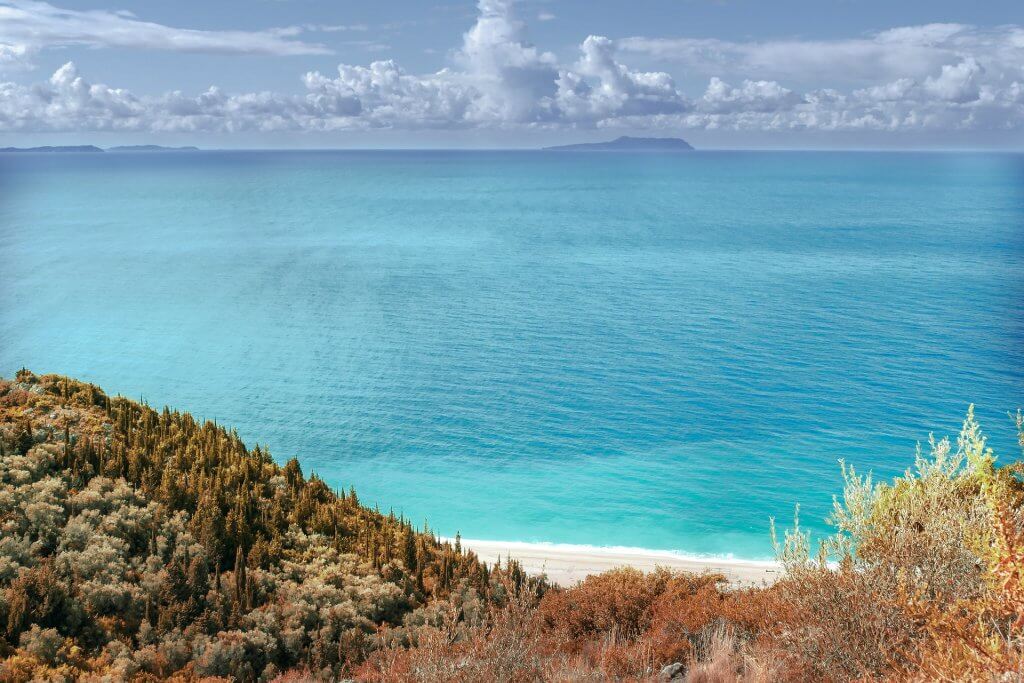
It is the country that embodies all Balkan qualities and flaws.
Albania is the perfect Balkan lover. Come and have the affair of your life.
Welcome to Albania, the land of eagles (and bunkers).
Basic Stuff
Ok, here’s some basic info that will save you a few searches.
Albania is a parliamentary constitutional republic facing the Adriatic and Ionian Seas in South-Eastern Europe (a politically correct name that Westerners use for the Balkans).
It has a population of 2,821,977 people and an area of 28,748 km2 (11,100 sq mi).
The biggest city and capital is Tirana with a population of 557,422 inhabitants.
In 2009, it gained full membership in the NATO alliance. It has been a candidate member to join the European Union since 2014.
The official language is Albanian. It’s spoken by the vast majority of the population, but understood by no one outside Albanians themselves. The explanation? Albanian is an Indo-European language different from any other and represents a linguistic branch of its own. The two main dialects are Gheg (spoken in the north of the country) and Tosk (spoken in the south of the country).
Aside from English, many Albanians speak Italian as a foreign language.
The official currency is the Albanian lek.
Religiously, Albania is one of the most diverse countries in the Balkans. The large majority of the population being Muslim (56,70%), Catholic (10,03%) and Orthodox(6,75%), with many (13,79%) undeclared citizens.
Here’s a map of Albania because why not.

Okay, now off to the interesting stuff…
Historic and Cultural Traits
Like every Balkan nation, Albanians are very proud of their country and history.
Like everyone else, they will tell you they are the oldest and best ethnic group in the Balkans.
Convince them you believe them like you pretend to believe everyone else from this crazy family.
Once you learn how to deal with Balkan quarrels, you can actually focus on exploring the country. Though still one of the less-visited Balkan countries, it is safe to say that Albania is Balkan’s most well-kept secret. And easily the most intriguing place in the region.
Historically, Albania has been a melting pot of cultures built over centuries.
Starting with the ancient civilization of Illyria in Antiquity, followed by Greeks, Romans, Byzantium and the Ottomans ending with Italian and German occupation in the 20th century.
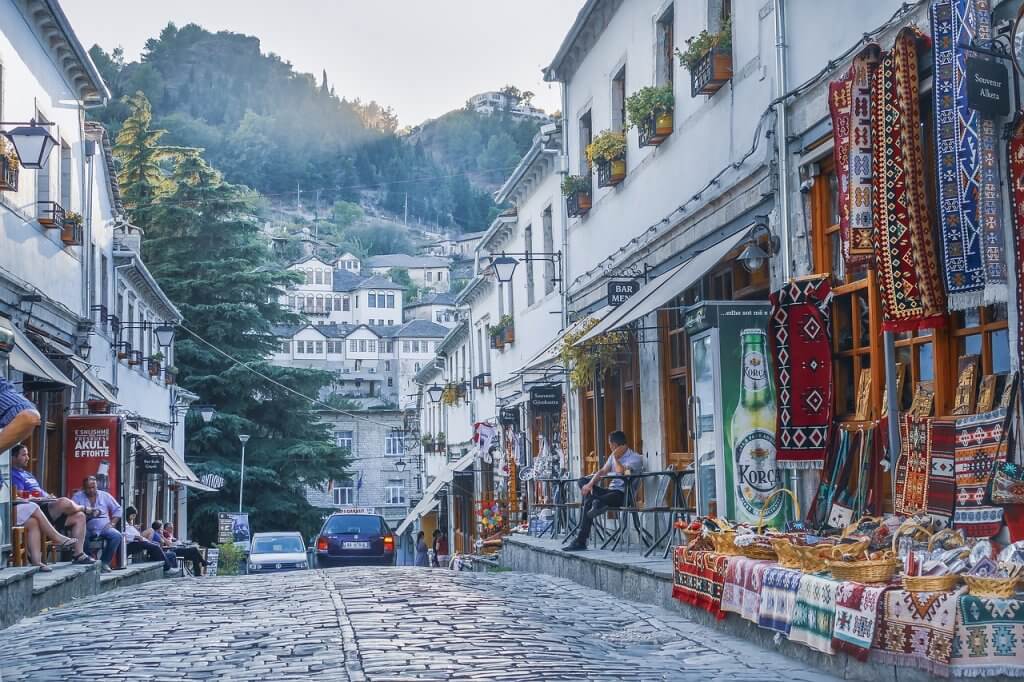
After World War II and up until the early 90s, Albania had one of the most hardcore Communist regimes under the guidance of Enver Hoxha. For this guy, neither the USSR nor China were not orthodox enough, so he ceased relationship with both West and East and put the country on a path of an experimental “self-sufficiency”.
As a consequence, during this period Albania was one of the poorest and most isolated countries in the world.
Despite the steady advancements that have been made over the last few decades, the shortcomings of Hoxha’s regime are still hampering Albania’s efforts in modernizing the country. Yet, this is what preserved its authenticity and prepared it for your arrival, dear traveller.
Food & Drinks
One of the highlights of Albania is its incredibly rich and tasty gastronomical tradition cuisine, so no worries – you will find something of your liking.
Did you know that Albania is the first country in the world in terms of the number of bars and restaurants per capita?
Hanging around in coffee houses (often for the entire day), drinking coffee or tea is actually an important social occurrence and the place to catch up on the latest news and rumours. You probably have more privacy on Facebook than in Albanian coffee houses.
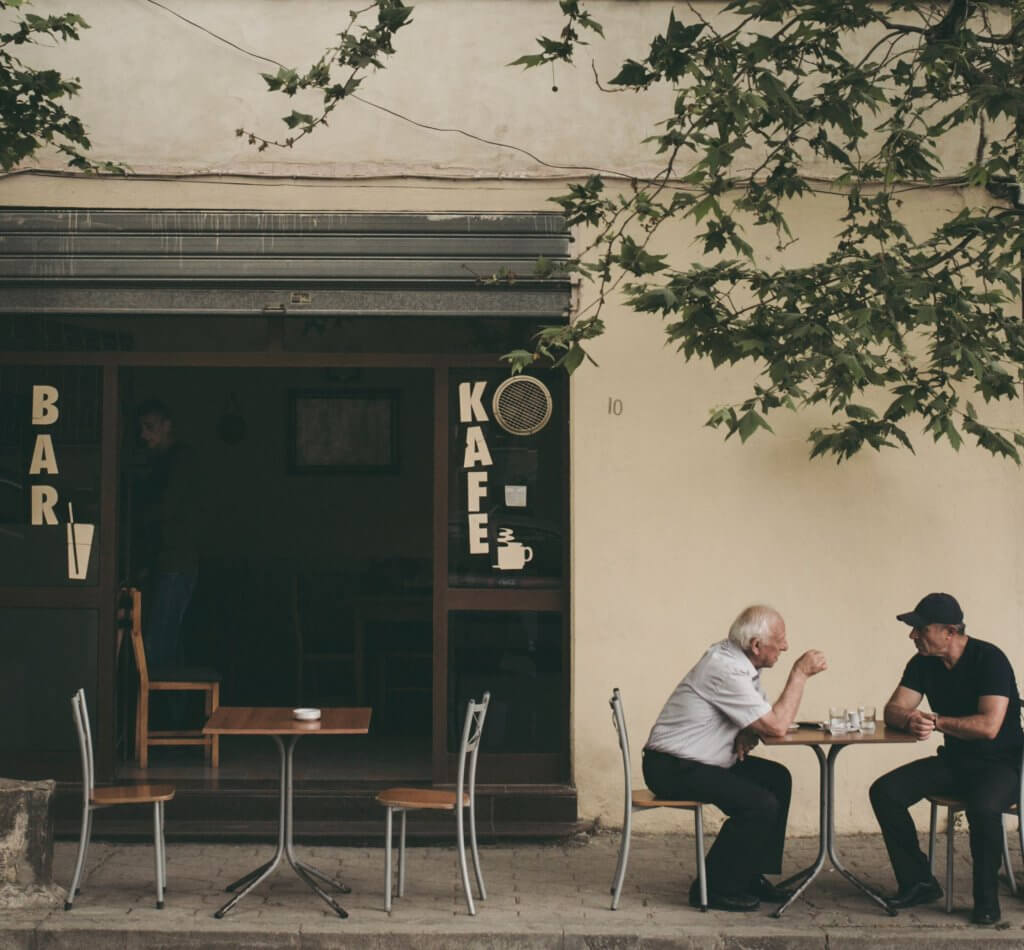
Oh, and hopefully you are ok with smoke – Albania is Europe’s second country in terms of the smoking population, right after Turkey.
Due to its peculiar position and extraordinary geographical diversity, Albanian cuisine includes a large variety of dishes and fresh ingredients, mostly falling within a Mediterranean diet.
Forget Western-type supermarkets and discover traditional Albanian dishes made from fresh and local ingredients: from seafood closer to the sunny coast, to different types of cheese, grilled meat, fruits and vegetables that are typical from inland regions – you cannot go wrong.
Every region has some typical products, and the locals will be happy to give you a taste of the famous Albanian hospitality.
Warm advice – try the Tavë kosi, the Albanian national dish made out of lamb or chicken meat. If you are in Tirana, you can even go to a one day course and make it yourself.

Tavë kosi (Source)
If you are thirsty, try some of the local wines: Albania has a 6000 years old tradition in winemaking. As a digestive, you will be able to try a spirit called Raki – often homemade, mostly from grapes, plums and raspberries.
Last but not least, try the baklava or the trilece as a dessert: the first one is a Turkish and Balkan delicatesse made of nuts or pistachio, while the second is a “cake made with three kinds of milk”.
Sounds delicious, doesn’t it?
Getting Around
Welcome to the jungle.
When it comes to transportation, among its neighbouring countries, tales have been told of Albania’s legendary bad infrastructure and even worse drivers.
Like every good stereotype, even this one is true.
Despite the recent efforts and investments in infrastructure, Albania is a perfect place to test your survival and orientational skills in traffic (aren’t lanes overrated anyway?).
Be wary: traffic signs and lights in Albania are slightly of any relevance, they’re merely a suggestion. When they work.
It’s a place where your traffic experience varies from this (link)
To this (link)
It’s like playing GTA. Just keep in mind it is real.
Also, do not put your hopes too high on Google Maps.
We don’t know if it’s not being updated regularly enough or the Albanians are simply altering their roads too quickly.
Therefore, when touring Albania, turn on what is left of your digitally polluted brain, turn off your GPS, pull out your good old fashioned paper road maps, learn a few basic Albanian words (that you will most certainly pronounce wrongly) and be still prepared to use sign language with the locals.
There’s a high chance that you will run into a herd of sheep (or cows) on an unpaved road in the middle of nowhere. And when that happens, you will almost certainly stay stuck there for a bit.
Give yourself a flexible time schedule when cruising around the country and remember: the best things happen when you don’t plan them.
Most of the domestic and international traffic occurs by road. There are several bus lines that can take you to Albania from Greece, Croatia, Montenegro, Kosovo and Macedonia.
In recent years, the state has been investing a lot in the road network, so be prepared to change a lot of road types when travelling. Most of them bad.
Fun fact (don’t read this if you are Japanese or German): Cities in Albania don’t have central bus stations. What’s great is that they use something way cooler: privately-owned vans called furgons. They are all around the cities. The lovely thing is that they don’t have timetables or set fares. You’ll have to negotiate your way with the driver.
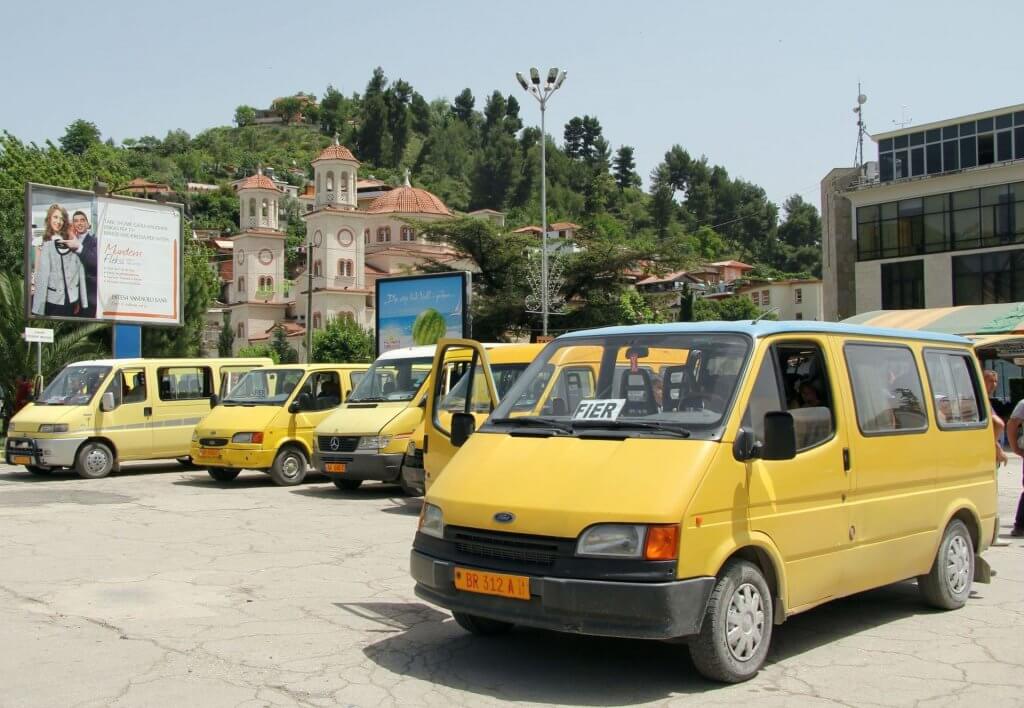
Feel free to ask for a discount if you end up pushing a furgon if it breaks down along the way. It could be a bonding moment with the locals and your fellow travellers since most likely someone will have some good raki (the traditional spirit, remember?) to share.
Tirana is the only international airport in Albania and the main transportation hub in the country, served by companies such as WizzAir, EasyJet, Blue Panorama or Lufthansa.
Railway passenger traffic is virtually non-existent, as there are no international lines to or from Albania.

Durres is the second-largest city in Albania and its biggest seaport, offering ferry rides from and to Italy including Bari, Ancona and Trieste. As you can see from the image above, it has a rather Caribbean atmosphere.
If you are coming from or want to go to Greece, there is a regular ferry line between the island of Corfu and the Albanian city of Saranda in the south.
Top Attractions
To a foreign visitor, Albania offers breath-taking scenery in the form of a unique combination of high mountain ranges and stunning coastline which mirrors its incredible diversity.
Just to give you an idea, a variety of 3,250 plant species can be found in the country, which is almost one third of all plant species found in Europe.
It has UNESCO World Heritage sites, Ottoman and Roman settlements, crystal clear sea, untouched mountains and majestic lakes. Given that most of the country is rather unknown to the modern traveller, all of the attractions are sort of “hidden gems”.
Among them, some are better known than others. Let’s check the mainstream attractions first.
1. Bunk’ Art, Tirana
Tirana is the capital and biggest city of Albania. It is perhaps most well known for the colourful facades of its boxy Communist buildings that certainly impress visitors.
Decades ago, the former Communist leader Enver Hoxha, in his paranoia, ordered bunkers to be built all around the country in case of a foreign attack. That, of course, never happened. Today, the idyllic Albanian landscape is dotted by an astonishing 170,000 to 750,000 bunkers scattered all over the country.
To mark symbolically the arrival of a new dawn, the bunker that was supposed to host Hoxha himself and the party leadership has been turned into Bunk’ Art, a combined history and art museum that showcases the 45 years of modern Albanian history in a unique way.
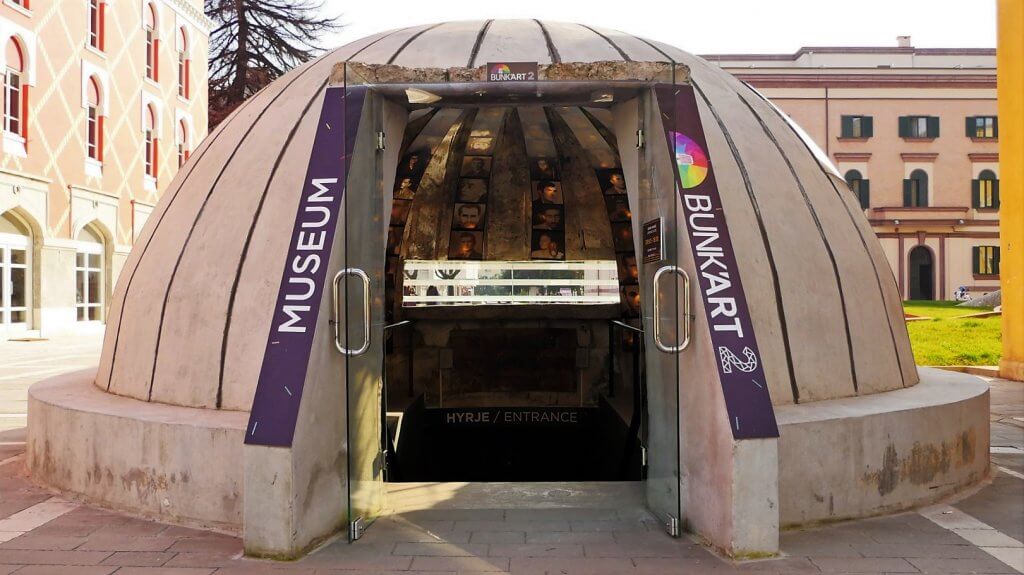
2. Albanian Riviera
Yes, Albania has its own Riviera as well.
And it offers better value for money than Cannes or Nice. There we said it!
Stretching from the middle towards the south of the country between the cities of Vlora and Saranda, the Albanian Riviera is one huge hidden gem.

You can find many bars, restaurants and clubs in the bigger urban centres and touristic villages. You can also find uncrowded beaches where you can actually enjoy swimming in clear blue water and sunbathe in peace. Everything at safe distance from your otherwise annoying beach buddies.
One of the most famous beaches is the Mirror (Pasqyra) beach, a hidden cove surrounded by cliffs that offers a truly Mediterranean laid back experience.
For more hidden beaches, you will have to ask the locals or discover it yourself, otherwise, it wouldn’t be fun…
(Or you can check this excellent Lonely Planet article about the best beaches of the Riviera).
3. Venice Art Mask factory, Shkoder
Albania’s cultural capital is the northern city of Shkoder. It is located on the shores of the eponymous lake and, with its artsy vibe, it is the perfect place to discover the latest artistic trends in Albania.
One of the highlights of the city and a must-see landmark is the Venice Art Mask Factory that contains the most diverse and exquisite collection of Venetian masks in the world.

North of Shkodra, you can find one of the most underrated, hidden and beautiful regions in the country: Malësi e Madhe, with the city of Koplik as its centre.
If you love lavender, that is the perfect place for you. An area almost totally devoid of tourists, it looks like Provence, especially in early summer when lavender blossoms in all of its majestic beauty.
4. The ancient city of Butrint (UNESCO)
Butrint, located in the south of Albania, approximately 20km from Saranda, has been a UNESCO heritage site since 1992. Inhabited as early as the 8th century BC by the Greeks, it was an important political and cultural centre for centuries up until the Middle Ages when it was abandoned.
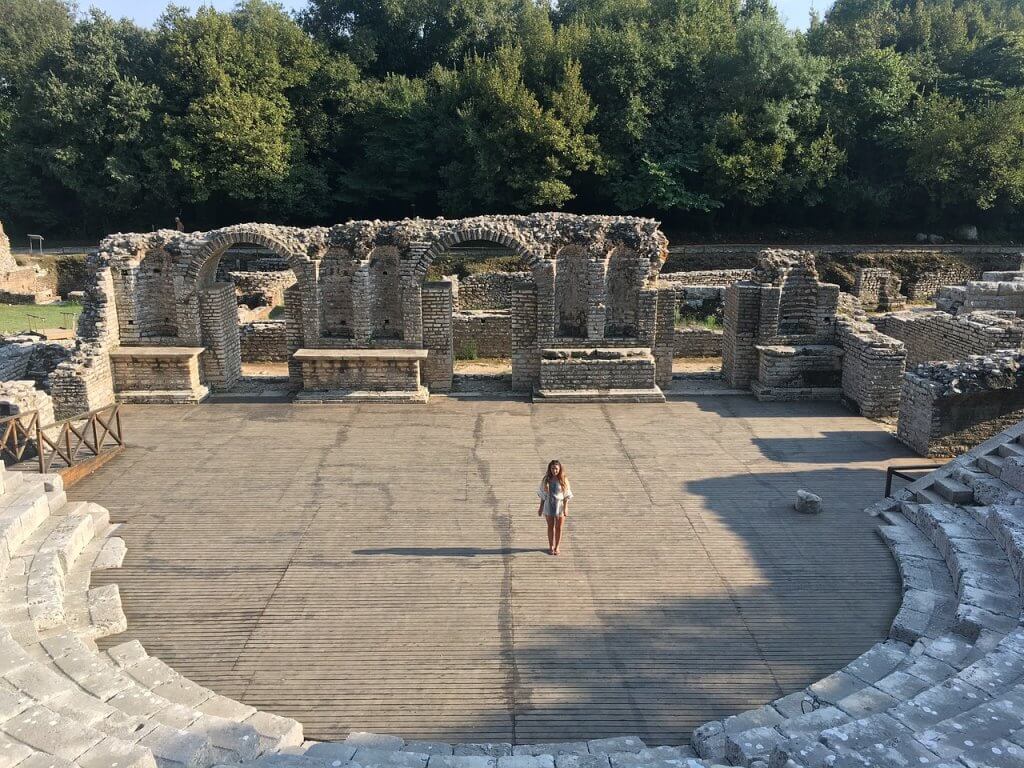
It preserves traces of Greek, Roman, Byzantine and even occasional Venetian and Ottoman rule and represents a unique example of a combination of archaeology, monuments and nature in the Mediterranean. It is part of the Butrint National Park.
Together with its hinterland, it constitutes an exceptional cultural landscape that is one of the most popular tourist destinations in Albania.
5. Blue Eye of Albania
A must see location is the Blue Eye (Syri i kaltër) of Albania. Situated not far from Saranda, this unique natural phenomenon consists of a transparent water spring that forms a deep pool with mesmerizing blue to turquoise colours. An interesting fact is that even though divers tried to descend the Blue Eye to ponder its real depth, still no one knows how deep the hole actually is.
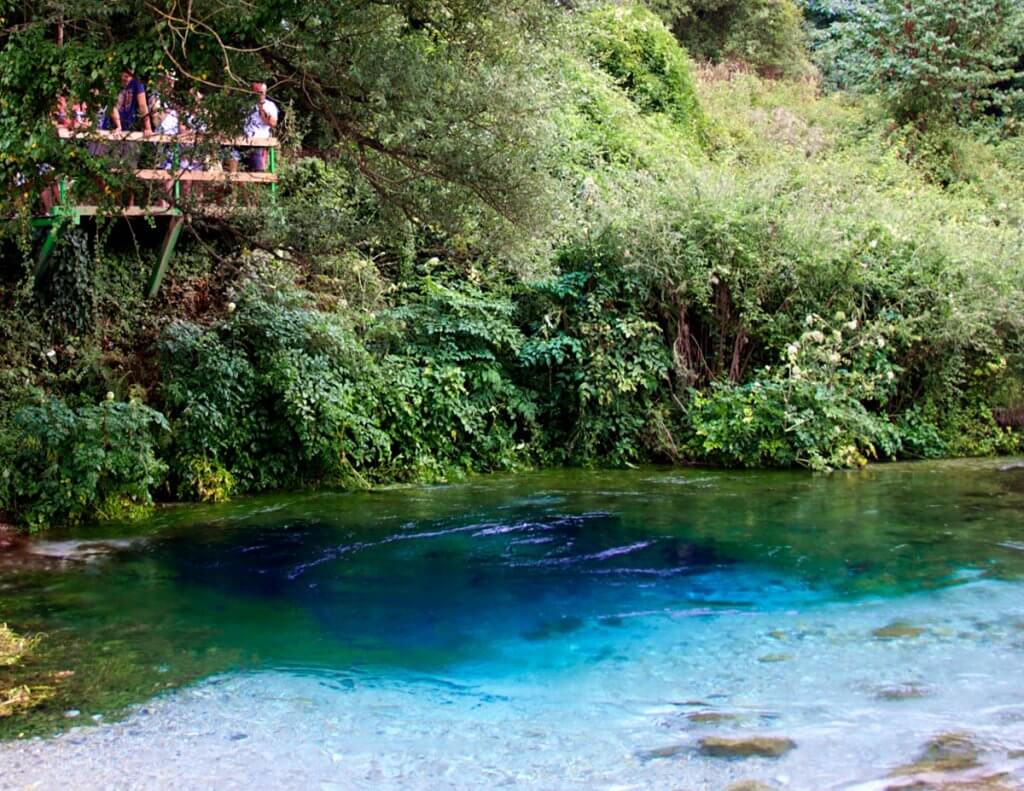
Who cares anyway: though built to give you a perfect standpoint to admire its beauty, you can jump in the Blue Eye from a little metal balcony overlooking it. Wait, there are signs saying it is forbidden to jump in it? Come on, you are not in Slovenia, so no one will say anything. Just don’t say you have read on Balkan Roads that it was allowed.
With the Trip Advisor favourite spots out of the way, let’s check out those hidden pearls that not even Google knows about.
First on the list is…
1. Theth National Park (Blue eye of Theth)
Situated a few hours drive north from Shkodar, the Theth National Park is a perfect destination for those who love untouched nature.
Famous for its variegated flora and fauna, the Theth National Park offers a unique combination of mountains, valleys and rivers and it is home to more than 1500 species of plants, some of which are found only in the area.

Once you arrive at the village of Theth, be sure to hike to the Blue Eye of Theth, a natural masterpiece. The Blue Eye is a majestic emerald green pool filled with ice-cold mountain water that offers a truly unique spectacle as far as eyesight reaches.
It is also a perfect place to take some photos for your social media profiles: no filters needed. Since you are already in the area, do not miss the opportunity to cross one of the most panoramic roads in the Balkans: the one connecting Shkodar and Vermosh.
Prepare yourself for some jaw-dropping experience along the way.
2. Rana e Hedhun beach
If you really want to be a hipster even by Albanian criteria and not go to the Albanian Riviera, visit the Rana e Hedhun beach. Situated in the north of the country close to the city of Shengjin, it is an 8km long sandy beach that will make you wonder why did you spend your last summer holidays in Sardinia when such beauty existed in Albania.

Pine trees surround the beach, so you can take cover when sun rays are strongest, though it goes without saying that you will have sunburns eventually because you are a tourist after all and that is what tourists do.
3. Kepi i Rodonit / Cape of Rodon
Just an hour and a half from the capital Tirana lay the rocky peninsula of Kepi i Rodonit.
This way too overlooked spot is home to some of the cutest beaches in the country. If you are into historical landmarks, you should definitely visit the ruins of a Medieval castle built by the Albanian national hero Skanderbeg in the 14th century and a church dedicated to Saint Anthony.
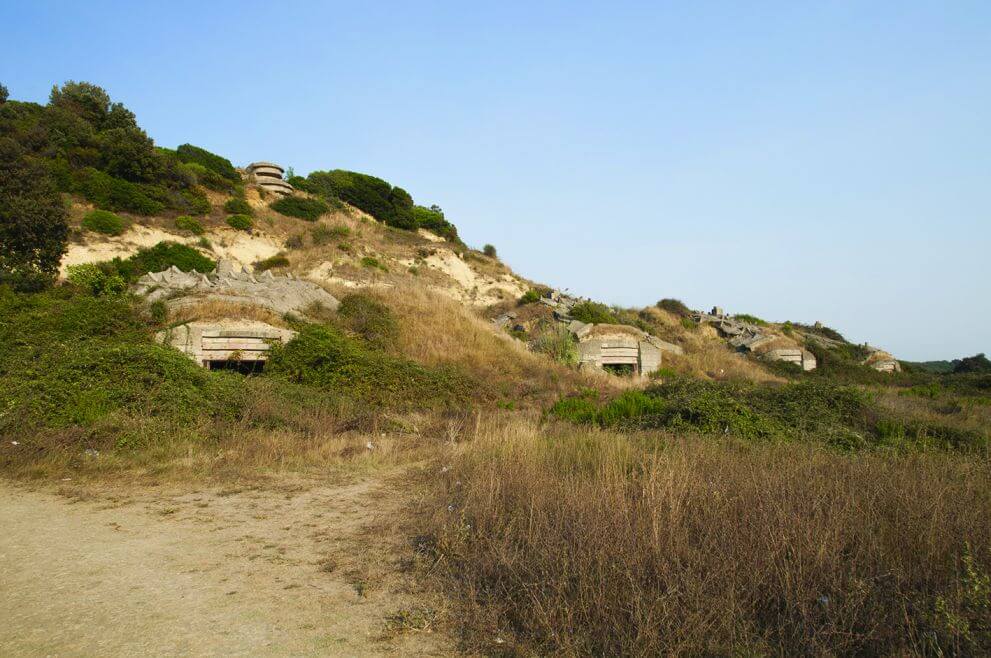
Surprisingly enough, there are some bunkers nearby as well, so you can go crazy on that as well.
4. Llogara Pass and Llogara National Park
Though Albania is full of scenic roads, should you travel from Vlora down south towards Saranda, you will be amazed by the stunningly beautiful views along the way.
The road that takes you through the Llogara National Park is a particular highlight. Stop at the 1,027m high Llogara Pass for a break. There are a few excellent restaurants overlooking the Ionian Sea.
After that, just pick one of the many sandy beaches that are present in the area for a swim before you continue further south.
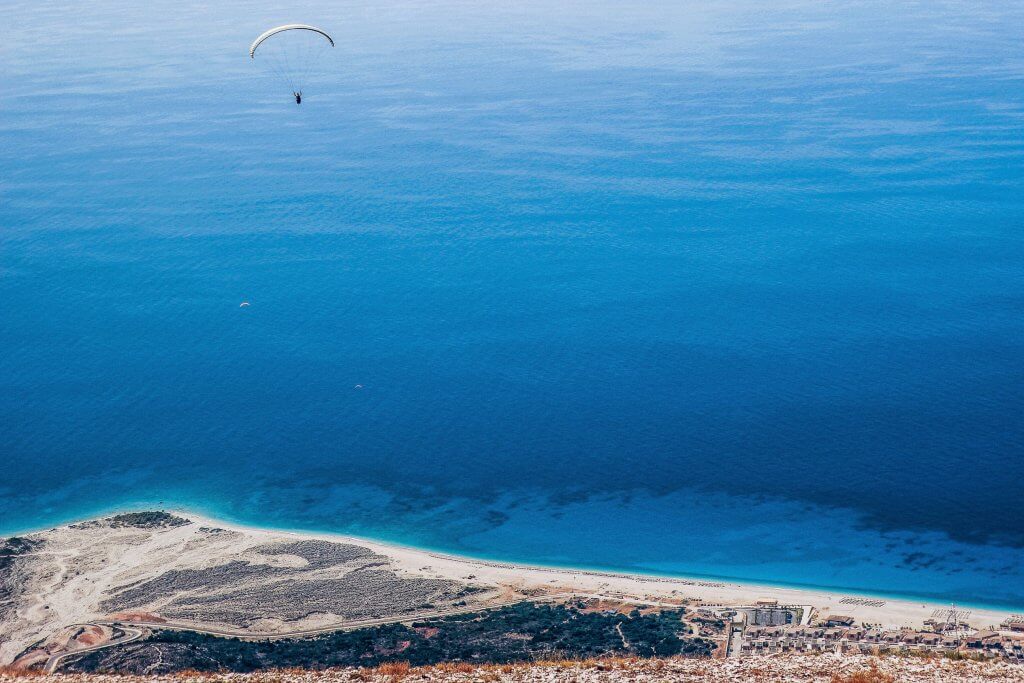
The most famous one is the 1,5 km long Palase beach that is used as the landing ground by parachuters and paragliders.
Remember to look upwards while you are laying on the beach, just in case.
5. Ksamil Islands Mussel Tour
Do you love seafood?
Regardless of your answer, you should drive to the village of Ksamil in the south and take a mussel tour.
Embark on a traditional boat that will take you to a mussel bed. Under the guidance of local experts, you will learn about how mussels are cultivated, collected and cleaned.
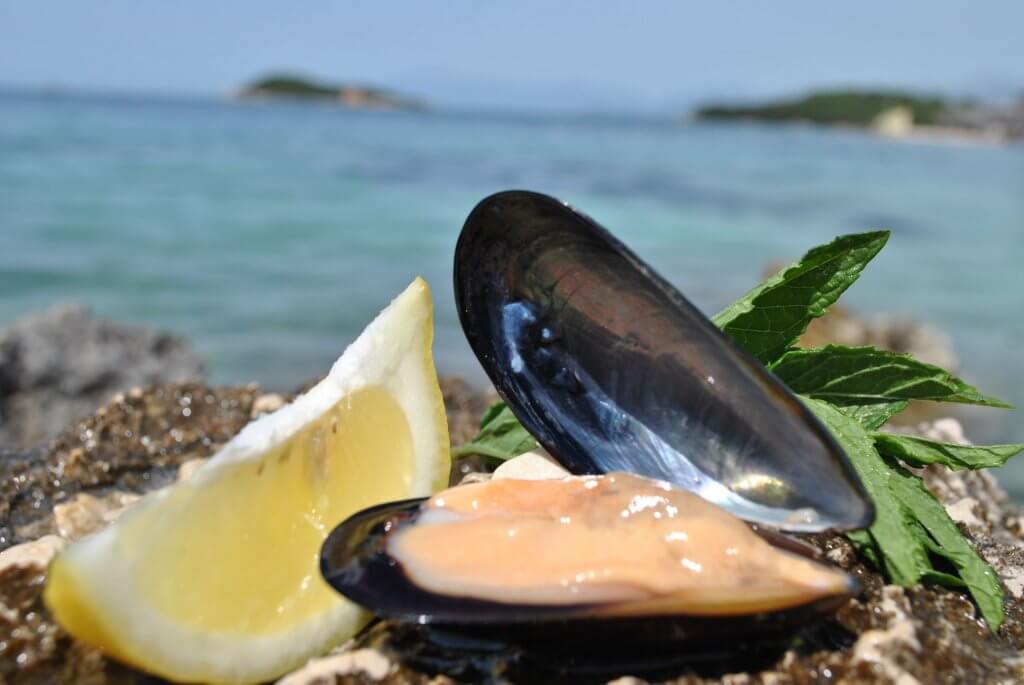
All that talking makes you hungry? No need to despair. Once you come back onshore, mussels that are collected will be cooked in front of you. Paired with local fresh ingredients and a glass of the best Albanian wine, it is a cultural and gastronomical experience that you will fondly remember.
Budget (for 1 week)
Albania is a cheap country even by Balkans standards.
That doesn’t mean you cannot find high-quality restaurants or accommodation. It means that the value for money ratio is excellent.
Even if you are a cheapskate, you should be able to feel at ease with yourself in Albania.
NOTE: Get yourself some travel insurance for the duration of your stay. Since Albania is not a member of the European Union, it is highly advised to get some to avoid beaurocratic issues.
Regarding accommodation, prices change as you move through the country. The most expensive parts are found along the coast on the Albanian Riviera and in the bigger cities.
For instance, you can sleep in a hostel in Tirana for 9 EUR per night.
Otherwise, you can rent a double room in a three-star hotel for 80 EUR. In the countryside, the prices are even more convenient, especially if you always wondered how it is to sleep in a barn among a herd of animals.
Regarding transportation expenses, the average price of gasoline as of February 2020 is 1,4 EUR/litre.
All the roads are free except the Milot-Morine motorway that connects Albania with Kosovo. A one-way ticket is 5 EUR.
As for food&drinks, Albania has a lot to offer and it is impossible not to find something you will like. You can eat yourself to death in a restaurant for between 5 EUR and 12 EUR on average, drinks included.
That is if you want to be posh. We recommend you let yourself discover the excellent and cheap street food scene Albania has to offer. Don’t be like Italians that eat pizza wherever they go.
The price of beer varies from as low as 0.80 EUR up to 3 EUR for imported beer.
A bottle of wine in a quality restaurant will cost you around 8 EUR.
A bottle of water in the supermarket is 1.20 EUR. Water quality in Albania in the cities is not the greatest, so it is advisable to buy bottled water. In the countryside, the situation is not as bad: no need to drink urine like Bear Grylls on tv… probably.
Visiting Albania and not going to a coffee shop is like going to Rome and not seeing the Pope. You can have excellent dark coffee or cappuccino starting from 0.5 EUR upwards. So no excuses – leave a generous tip, and you will see what Albanian hospitality is all about.
To sum up (weekly budget per person ): 150 EUR- 350 EUR
25EUR-50EUR per day per person, including accommodation, transportation, food&drinks and activities.
Trivia
Here are some fun facts and conversation starters to help you appear smarter.
- There are more Albanians living outside of Albania than in it
- In Albania, nodding your head means no, and shaking your head means yes
- You’re likely to notice a large number of scarecrows hanging from houses. That is because Albanians believe that a scarecrow placed on a home will bring good luck to the family. Oh, we almost forgot: sometimes they use teddy bears for the same purpose. Occasionally, they impale them too. So better leave the teddy bear you sleep with in the car.
- An important part of traditional Albanian culture is “Besa”. Roughly translated as “to keep the promise”, it is an ethical code or pledge of honour which requires an individual to be true to his word, loyal to his family and friends and kind to Balkan Roads travellers (the last one was made up by us)
- Albania is a paradise for onion lovers. It’s ranked second in the world based on the consumption of onions per capita
- Albania is the leading world producer of hydroelectric energy by percentage (90%)
- Dictator Enver Hoxha declared Albania an atheist country in 1967 making it the first country to lay claim to atheism
- Mother Theresa was an ethnic Albanian and Tirana’s airport is named after her
- Albania is one of the few countries in the world where there are no McDonald’s restaurants
- Lazarat, a small village in southern Albania, was once considered “the cannabis capital of Europe”. It’s home to a hefty amount of mafia activity, producing some 900 tonnes of marijuana a year. In 2014, 800 police officers were deployed to crack down on the flagrant flouting of rules of not growing truck-loads of weed every day. Authorities gained control of the village after a five-day shoot-out with heavily armed residents.
—
There’s still a lot to say about Albania but we have to save something for when you join the Balkan Roads trip, right?
